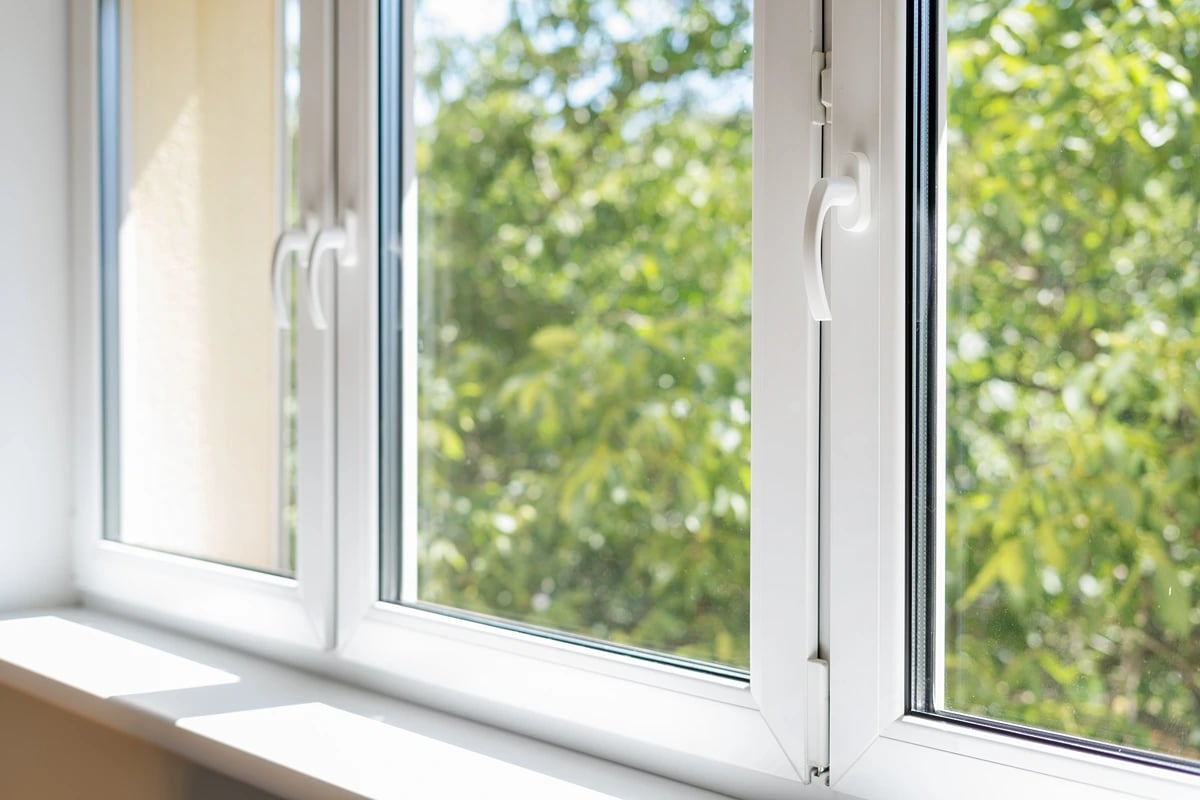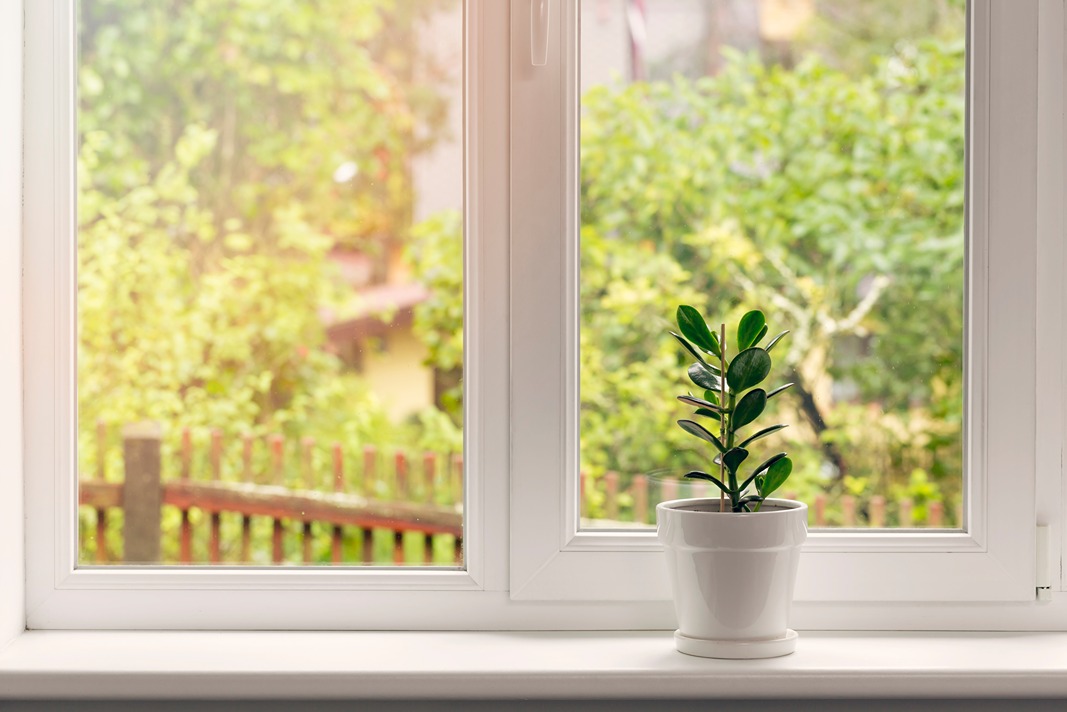What Is Low E Glass?
April 7th, 2024 | 5 min. read
Get weekly updates with the most recent articles and videos from Southwest Exteriors.
Subscribe
Have you ever noticed a glass window with just a hint of a greenish tint?
What you were looking at is Low E (Low Emissivity) glass, a type of glass that blocks specific wavelengths of light to make your home more energy efficient.
Windows are by far the weakest link in your home's building envelope, causing up to $50 billion in energy losses per year. But while insulating your walls or roof is relatively straightforward, insulating your windows is a little more complex.
That's where low e glass come in. With a specially-engineered coating, low e glass can reduce heat loss and heat gain by up to 70%.
In this article, we’ll talk about what Low E Glass is, how it works, it’s benefits, the different types of low e glass, and how to tell if you already have low e glass in your home.
Table of Contents
How Do I Know If I Already Have Low E Glass?
Want To Learn More About Window Coatings?
What Is Low E Glass?
Low Emissivity (Low E) glass is a specially-engineered type of glass that minimizes the amount of infrared (long wavelength) and ultraviolet light (short wavelength) that passes through the glass pane, while allowing the rest of the light spectrum (visible light) to pass through.
“Emissivity” is a measure of an object's ability to absorb and radiate heat. Lower emissivity means the glass surface reflects more heat than it absorbs or emits.
Low emissivity means the glass is much more energy efficient than clear glass. It also protects furnture and rugs from fading, which is primarily caused by the ultraviolet part of the light spectrum.
You can recognize low e glass by the slightly greenish tint you’ll see when you look at the window from the right angle.
When low e glass was first introduced in the 1970s, it was expensive and not particularly efficient, but advances in materials science have now made it very effective and relatively inexpensive compared to clear glass. In fact, Low E glass is essentially the standard in most windows now. If you want ordinary glass, you may actually have to pay extra.
The Benefits of Low E Glass
Low E glass has 3 primary benefits: energy savings, cost savings, and furniture protection.
Energy Savings
Low E glass can reduce heat loss by 70% and heat gain by up to 77%. This reduces energy usage substantially, reducing both your energy bills and your carbon footprint.
Cost Savings
Most homeowners see a reduction in energy bills of up to 30% when upgrading to energy efficient windows with Low E glass.
Protection of Furniture
Ultraviolet light, the shortest part of the light spectrum that is invisible to the human eye, breaks down chemical bonds and causes colors to fade on your furniture, rugs, and really any other object exposed to it for long periods of time.
Low E glass blocks up to 99% of the UV spectrum, keeping your couches and rugs looking sharp.
How Does Low E Glass Work?

In order to understand how low e glass works, you have to understand the solar energy spectrum. The spectrum of light is composed of waves with of different lengths, with different wavelength ranges having different properties.
Ultraviolet light has wavelengths of 310-380 nanometers and is invisible to the naked eye. It’s responsible for fading and deterioration of objects.
Visible light consists of the part of the spectrum of wavelengths between 380-780 nanometers.
Infrared light (or heat energy) is also invisible to the naked eye, and consists of wavelengths of 780 nanometers and above.
Low E glass consists of a standard glass pane coated with microscopically thin particles made from materials like silver, zinc, or tin oxide, which form a layer so thin that it’s virtually invisible to the naked eye. This layer then selectively reflects UV and infrared rays while allowing the visible light spectrum to pass through.
Types of Low E Glass
Low Emissivity (Low E) glass comes in various forms, based on differences in coating materials, application methods, and the types of energy reflected or transmitted.
Passive Low E Glass
Passive Low E glass, also known as Low-Emissivity Hard Coat, is designed to allow more heat gain from the sun than other types of low e glass, while retaining internal heat. It does this by allowing more infrared energy in but less of it out.
It's made by fusing a pyrolytic coating to the glass surface during the manufacturing process, resulting in a durable, hard coat finish.
Passive Low E glass is excellent for cold climates where additional heat from the sun is beneficial and can help reduce heating costs during cold weather.
Solar Control Low E Glass
Solar control Low E glass, or Low-Emissivity Soft Coat, is the opposite of passive low e. It’s engineered to minimize solar heat gain, making it suitable for warmer climates where cooling demands are high.
This type involves sputtering a multilayer stack of metallic and ceramic layers onto the glass in a vacuum environment, creating a softer coating that is sealed within double or triple-glazed insulated glass units (IGUs) to protect it from wear and tear.
Solar control Low E glass reflects a larger portion of the sun’s heat, keeping interiors cooler and reducing the reliance on air conditioning.
How Do I Know If I Already Have Low E Glass?
To see if a window has low-e glass, perform the following test:
- Light a match or use a small flashlight and hold it close to the window. If you have a double-paned window, you'll see four reflections of the light or flame because of the windows four glass surfaces (or two reflections for each pane of glass).
- When low-e glass is present, one of these reflections will show a different color compared to the others.
- Without low-e glass, all four reflected images will be the same color.
Want To Learn More About Window Coatings?
Low E glass is just one type of coated window. Other kinds of coatings - like insulated coatings, tinted coatings, or glare control coatings - exist for different purposes, and may be a better choice for your project. Learn more about these types at our article, 5 Window Glass Coatings And How They Affect Your Home.
